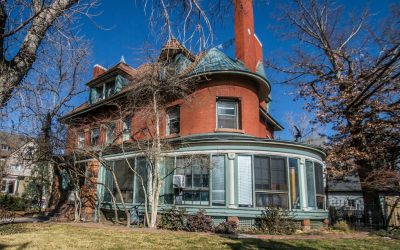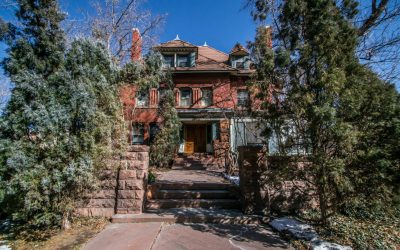

Details
Description
Map
Units
History
Details
Address: 900 N. Logan Street
Neighborhood: Capitol Hill
Walk score: 93
Bike score: 97
Transit score: 56
Description
900 Logan Street is one of the most iconic houses in Capitol Hill in terms of location, visual appeal, and history (see below). The house is a stately, red brick mansion on the corner of 9th Avenue and Logan Streets in the heart of Capitol Hill. Today, the house holds 7 apartments. One apartment (900 Logan Street) is housed in the old grand entry (and includes the light-filled, wrap-around porch). Another (Unit 2) is built within the old carriage house. A third (Apartment 5) occupies the space on the top floor that used to house the old ballroom. History (“The Mansions of Denver”): This imposing landmark mansion at 900 Logan St. was built in the 1890s for Judge Moses Hallett, who moved to Colorado from the Midwest in 1860 to form a law practice. Hallett was appointed chief justice of the territory of Colorado in 1866 by then President Andrew Johnson. He continued to practice in the legal field well after Colorado joined the union in 1876. The following year, president Grant appointed Judge Hallett to the US District Court for Colorado, and he remained in that position until his retirement in 1906. Hallett became particularly adept at solving complex legal problems pertain to the mining industry at a time when Colorado mines we’re producing at a peak rate. He frequently traveled to the camps of Leadville, Cripple Creek and Creede to oversee disputes between management and labor that naturally arose in the states fledgling industry. In 1892 he became professor of American constitutional law at the University of Colorado at Boulder. He was also sought after as an expert in the field of water law. The sprawling 30 room Hallett Mansion, constructed of dark red brick, featured spacious rooms built around a large central hall. Hand-carved wood work appeared throughout the house, and custom made lighting fixtures were fitted for both gas jets and electric wiring. A large drawing room, dining room, and a library were found on the main floor, while the upstairs contained eight bedrooms and three baths. The top floor was, at one time, used as a ballroom. Judge Hallett married at the former Katherine Felt in 1882. She died in 1906, and after George Hallett’s death in 1913, the house was sold by the heirs and converted to a rooming house, like so many other mansions in Capitol Hill. For years it was operated under the name Wilhite Manor until it was purchased in the early 1970s by Bernie Katz, who restored much of the interior and turned the house into a combination of living space and offices.
Map
Units
| Unit | Size | Bedrooms | Baths |
|---|---|---|---|
| 445 E. 9th Avenue Unit 1 | 600 | 1 | 1 |
| 445 E. 9th Avenue Unit 2 | 900 | 2 | 2 |
| 445 E. 9th Avenue Unit 3 | 2000 | 3 | 2 |
| 445 E. 9th Avenue Unit 4 | 1150 | 2 | 1 |
| 445 E. 9th Avenue Unit 5 | 1150 | 2 | 1 |
| 445 E. 9th Avenue Unit 6 | 650 | 1 | 1 |
| 900 N. Logan Street | 2200 | 2 | 2 |
History